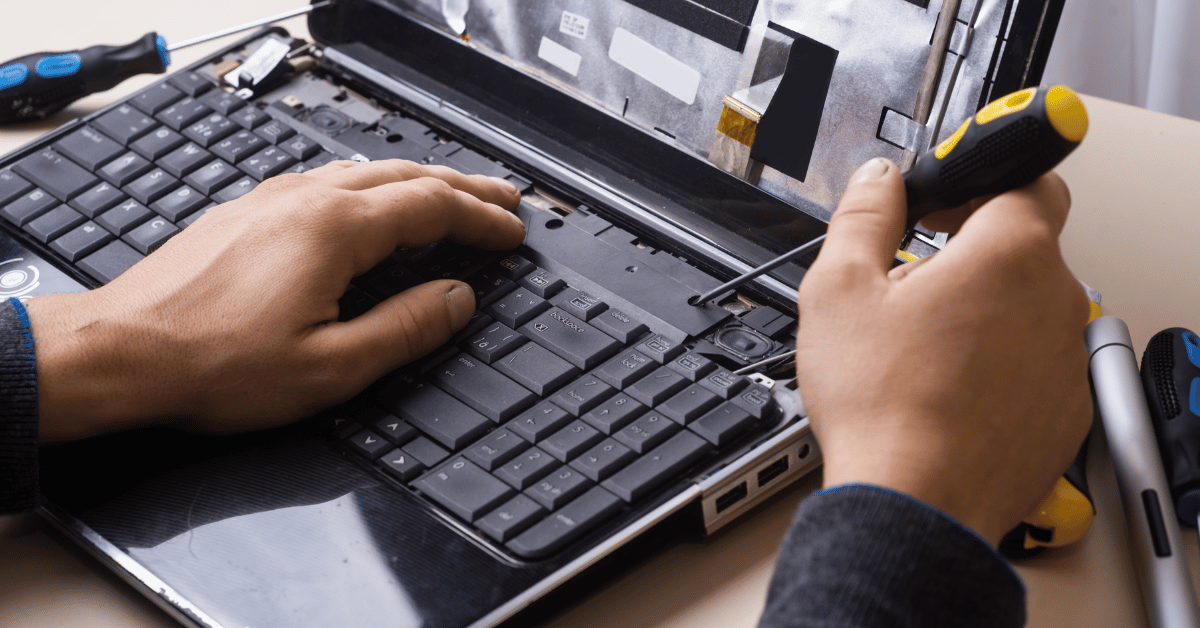Water damage in smartphones is a nightmare scenario that many of us dread. That critical piece of technology that connects you to everything – is gone in an instant. You feel lost, scattered, and detached from your digital life.
Perhaps your phone took an accidental dip in the pool as you were trying to capture the perfect underwater video. Or maybe it slipped out of your pocket as you were pulling your kayak onto the shore of the lake. That moment of realizing your phone sustained water damage kicks you into panic mode.
Will my phone ever work again? What should I do now? Can I reverse the damage? Take a deep breath. While the situation seems dire, it’s not necessarily hopeless. Your phone may yet live to connect another call, depending on key actions taken in the critical moments after water intrusion occurs.
In this guide, you’ll learn dos and don’ts for dealing with a water-exposed phone. Providing proper emergency care in the aftermath can mean the difference between temporary system hiccups and complete electrical failure.
Immediate First Steps When Water Damage in Smartphones
Immediately upon taking out your phone from the water, it is crucial to avoid certain actions that could cause further damage while also swiftly executing appropriate damage control measures.
First and foremost, do not attempt to turn on or charge a wet phone, as this poses a serious risk of short-circuiting and permanent electrical failure.
Equally important is to immediately dry the phone as thoroughly as possible with whatever absorbent materials are readily available – soft cloth, paper towels, even clothing or curtains.
Carefully wipe away any standing moisture, focusing on openings like ports and headphone jacks where water can seep deep into the device’s body.
Additionally, remove and dry detachable accessories and protective elements like cases, which trap fluid next to the phone’s body. Take out the SIM card and SD card as well to facilitate internal drying and further minimize electronic exposure.
An air blower, if handy, can help remove moisture from gaps and also remove traces of water with its cold compressed spray. Avoid shaking the can, and use short, controlled bursts aimed at edge seams and gaps around buttons.
Swift action is key, but judicious measures must be taken in these initial moments to gingerly dry the phone without moving or heating internal components. The immediate priority is to remove standing moisture while avoiding any powered-on operation prematurely.
Drying Precautions When Water Damaged Phone

With water hopefully gone from all critical areas, the next considerations surround the safest timing and conditions for repowering your water-exposed phone after a thorough cleaning. Modern smartphones no longer enable simple user battery removal, so when reconnecting internal power requires some careful judgment.
Ideally, allow a full 48 hours at a minimum while powered off before pressing any buttons or plugging in charging cables. This extended duration ensures time for residual water in microscopic interior gaps to evaporate, so internal humidity reaches optimally low levels prior to reapplying electricity.
Before attempting to turn the phone back on after passive drying, visually inspect ports and openings once more using magnification for any last remnants of liquid seepage.
If visible moisture remains present internally, continue desiccant or rice drying for at least 24 additional hours.
When finally ready to reconnect the battery, do so in an environment with readily available electrical insulation, in the rare chance transient short-circuiting occurs.
Avoid holding the phone in your hands or placing it on conductive surfaces. Initial power-on may intermittently spark while residual moisture dissipates internally through electronic heat production. This typically causes no permanent damage but risks user contact hazards.
Water Resistant vs Waterproof Phones
Many modern high-end smartphones now tout impressive water resistance ratings, leading some users to imperil these devices around water without concern. However, even nano-coating barriers and gasket seals have limitations when confronted by sufficient depths and duration of aquatic exposure.
No phone achieves complete impermeability from all fresh or saltwater threats. While breakthrough water protection technologies allow short-term resistance against splashes, spills and brief submersion, critical thresholds still apply regarding how long a phone withstands immersion, and how deep or pressurized the water conditions become.
Even devices boasting IP68 protection still warn against testing aquatic boundaries. Ultimately, no matter how robust its water mitigation capabilities are, immediately follow this guide’s emergency response steps if your phone sustains any manner of moisture ingress from liquids.
Carefully dry it internally and externally, power it off, apply desiccants, and allow 48+ hours before reconnecting power.
When to Replace vs Repair

If after 48 hours your phone fails to power back on or exhibits erratic behaviour like an unresponsive touchscreen or faulty ports, more extensive repairs may be necessary to address internal corrosion or short-circuited components from water contact.
Avoid attempting do-it-yourself disassembly unless you have specific experience and skill with smartphone component-level micro soldering and board repair.
The complex circuits in modern devices require careful soldering under powerful microscopes to extract and replace damaged elements – not a task for casual tinkerers.
In many cases, the cost of properly restoring a liquid-damaged phone with precise micro soldering and replacement of corroded parts can meet or exceed replacement cost. Thorough diagnostic testing is also required to detect the full extent of necessary repairs for erratic symptom issues.
For convenient local smartphone repair service by experts and advanced diagnostics, visit your local Dignity New Zealand Store or call us at +64 4 390 0033.
Repair your beloved device and keep repair costs affordable – likely below the cost of a replacement phone. Don’t wait too long – water damage damages compounds over time. The sooner you start the repair process, the better the prognosis for full restoration.
Final Thought on Phone Water Damage Repair
Quick action is essential when your phone is exposed to any amount of water exposure. While not all water damage can be reversed, taking the proper emergency response steps immediately afterwards can significantly improve the chances of restoring full phone functionality.
Initially, quickly dry the phone externally, remove SIM/SD cards, and do not attempt powering on or charging until thoroughly dried.
Next, allow an extended duration – at least 48 hours – for moisture in the phone and openings to escape using desiccants or dry rice. Avoid applying heat, and check ports/holes for complete internal moisture removal before reconnecting the battery.
Even water-resistant phones have limitations, so treat any aquatic exposure seriously with immediate drying protocols.
If unpredictable performance continues after drying and powering back on, internal repairs at a specialist may be needed to replace shorted components.
For affordable local smartphone restoration services, visit your local Dignity New Zealand store and let our experts handle the complexities of water damage repair.




